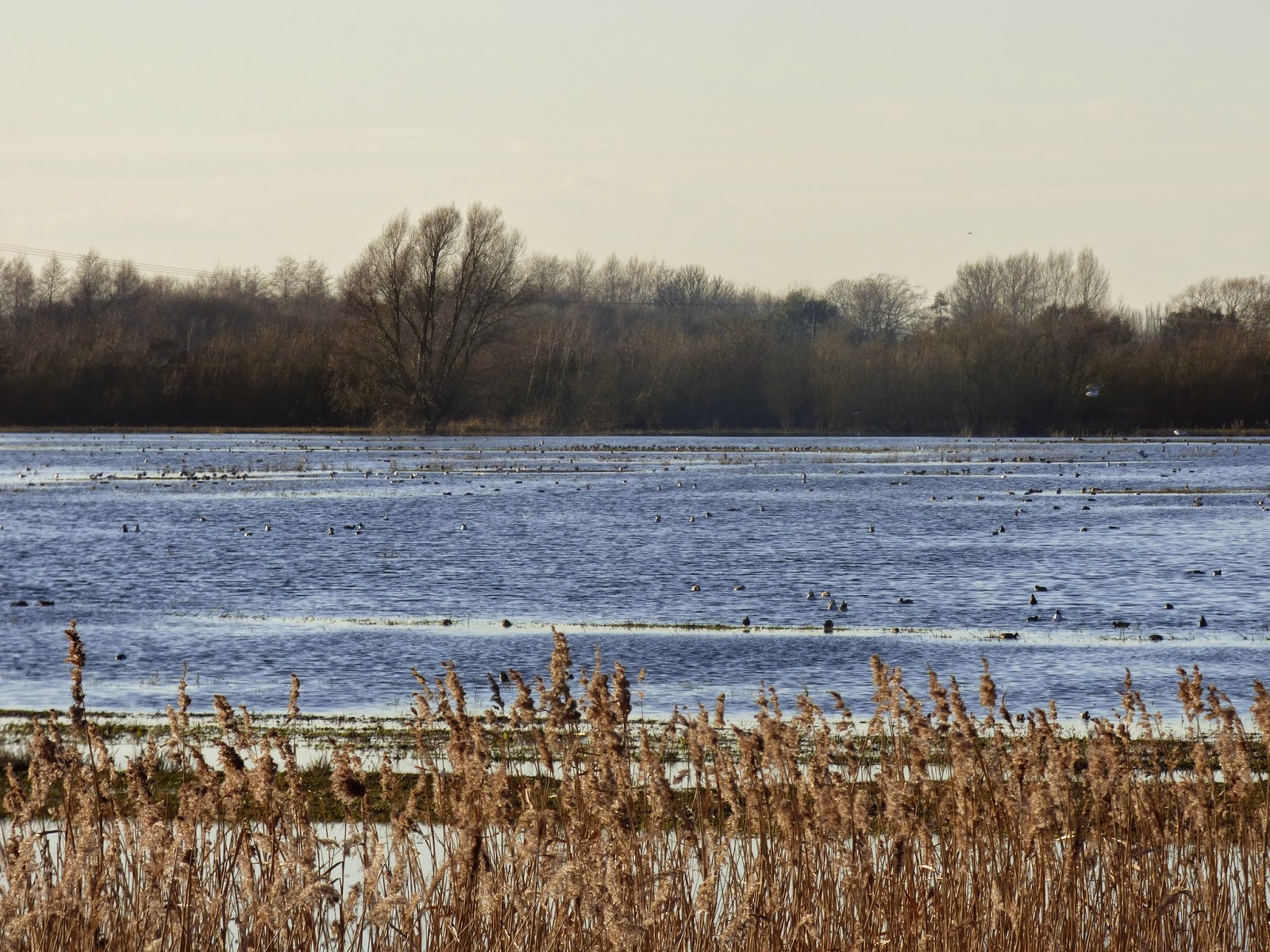WWT Welney – Tuesday 17th February 2015
We left home at 11am, it was a beautiful sunny morning although the wind had a bit of a chill to it. The temperature was 6˚C and that rose to 9˚C during the day but even then the wind had a raw edge but it was a beautiful Spring day when we are out of the wind. We’d decided to go to the Wildfowl & Wetlands Trust’s (WWT) reserve at Welney. It takes us about an hour to get there from our home in Watton and on the way we saw 5 Kestrels hunting either close to the road or the roadside verge. There has been a decline of these birds in recent years so it was good to see some evidence that there is a bit of a recovery taking place.
The Ouse Washes - WWT Welney
It is half term here at the moment and consequently there were plenty of cars in the car park and lots of families which is good to see, even though I’m not really keen to be in busy places. An interesting fact that was reported in the media last week was that after a recent survey in schools children could more readily identify business logos (eg. McDonalds, ToysRUs etc.) than they could the more common native wildlife and flowers.
Fortunately I was able to use the reserve’s mobility scooter which gave us a lot more scope to visit the more far flung areas of the reserve. On our way to the furthest hides there were plenty of small birds in evidence and some of these were already in pairs proclaiming their territories. There was an interesting Nature Trail along the path which was designed for families, especially the younger members of the families. Although I did speak to one young Mum and her Son and asked them if they’d seen anything interesting, to which they replied they hadn’t seen anything as they were following the Nature Trail!
Little Egret & Heron
Although there were plenty of birds on the flooded fields the Bewick & Whooper Swans were most notable by their absence and I have read since our visit that the tracked Bewicks were already back in mainland Europe and are beginning their migration back to the high Arctic. The Whoopers will be making their way North and Westwards to return to Iceland another small sign that Spring is not far away. We did see a juvenile Ruff from one of the hides and of course this threatened bird will soon begin it’s migration to its breeding grounds in the North of Russia. The Ruff is one of those birds whose breeding plumage is quite extraordinary but unfortunately for us to see that would mean a trip well into the Arctic Circle in Russia.
There were some pretty big flocks of birds in the air and one of the most impressive were the Dunlin (the collective noun is a fling of Dunlin). We could really hear the wind passing through their feathers which is called murmuration, a word that is more associated with Starlings (being one of their collective nouns) but this was far more pronounced.
We went back to the centre with the hope of some lunch but we’d left it a bit late and with all the extra visitors there was no food left but we did have a lovely hot chocolate and the entertainment of watching the birds on the feeders.
Looking Into The Visitor Centre
After our short break we went to the other end of the reserve, something I couldn’t have done without the use of the Scooter. Again there were plenty of birds and I don’t think we’d ever seen so many Lapwings together in one place at the same time (one of the collective nouns for lapwings is a deceit – the reason for this is that one of their main defensive mechanisms is to lure any predators away from their ground nests by feigning to be injured). There were also large flocks of Golden Plover (one of their collective nouns is a wing).
Looking Out Over Lady Fen From The Visitor Centre
Little Egret Lady Fen
After a thoroughly enjoyable day on the Ouse Washes we made our way back to the centre to be treated a lovely sighting of a Barn Owl quartering the banks of the New Bedford River (one of the Great Ouse relief channels). After making our way across the bridge spanning the New Bedford River we spent some time looking out over Lady Fen which was bathed in the glorious sunlight from the setting sun. We saw about half a dozen Hares and 4 Muntjac Deer.
New Bedford River - WWT Welney
We made our way home seeing another hunting Kestrel on our way. This is a list of the birds we saw: 8 Kestrels, Barn Owl, lots of Little Egrets, many Mute Swans, Lapwing, Crows, Chaffinch, Great Tits, Blue Tits, Greenfinch, Goldfinch, Reed Buntings, Coots, Wigeon, Teal, Cormorant, Tufted Duck, Mallard, Moorhen, Shelduck, Redshank, Ruff, Dunlin, Black-tailed Godwits, 2 Buzzards, Magpie, Blackbird, Lapwing and Golden Plover. Hares and Muntjac Deer.
The Sun Sets Over Welney
Quiz
The answer to the last quiz: Redshank (which is the name of a bird and a plant, whereas the others are all the names of moths and also the names of either a bird or a plant).
Latest Quiz
Which animal made these tracks found near this hole?
Keep your eyes peeled and good spotting.













No comments:
Post a Comment